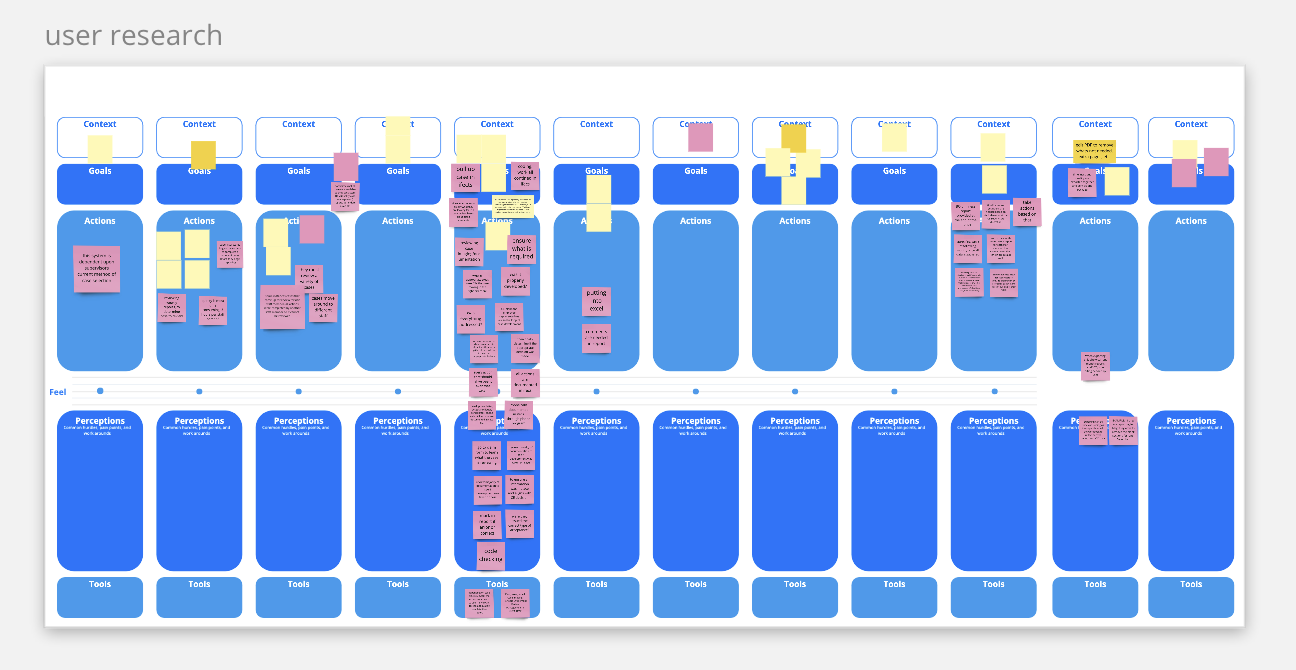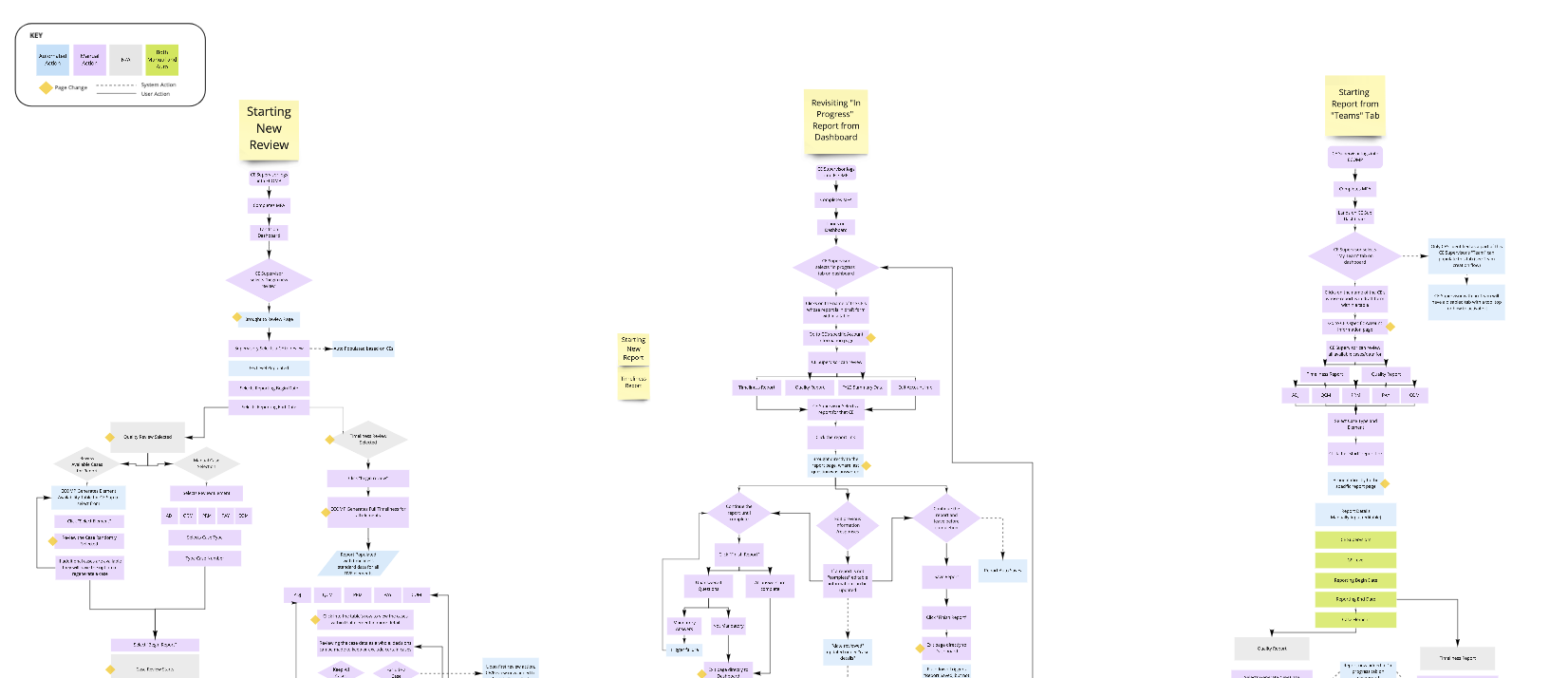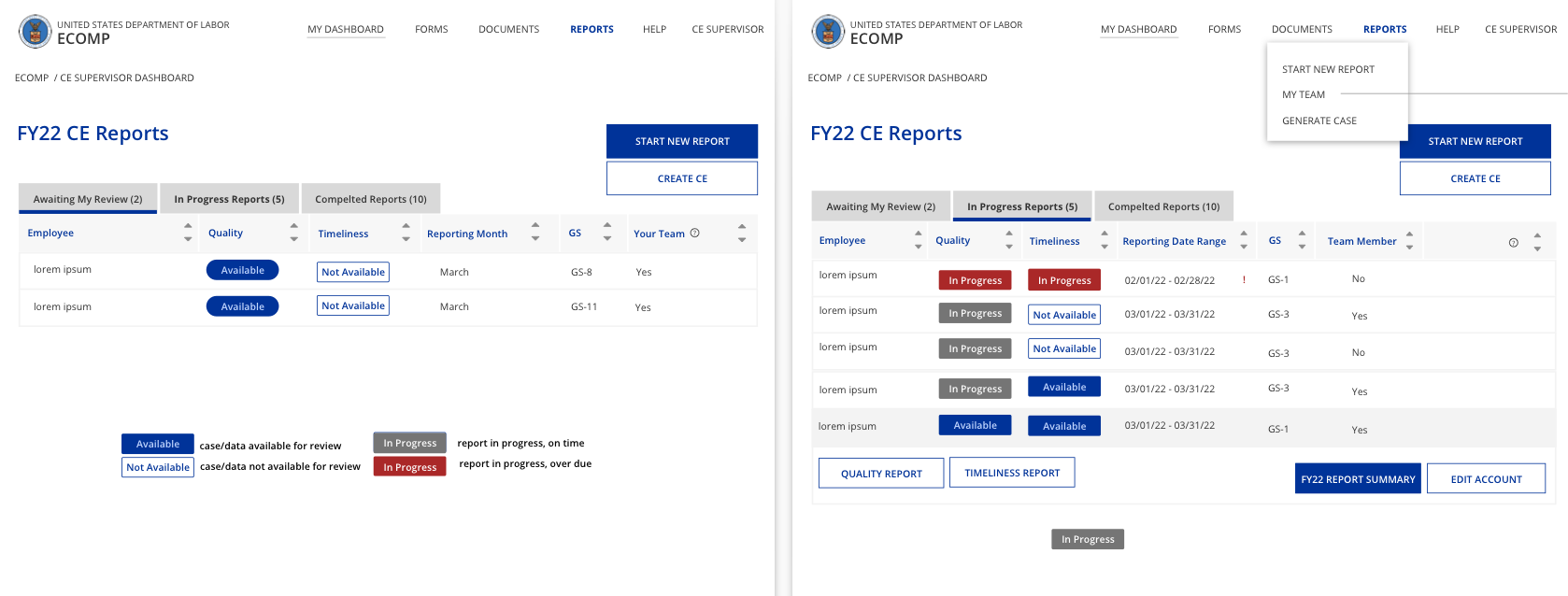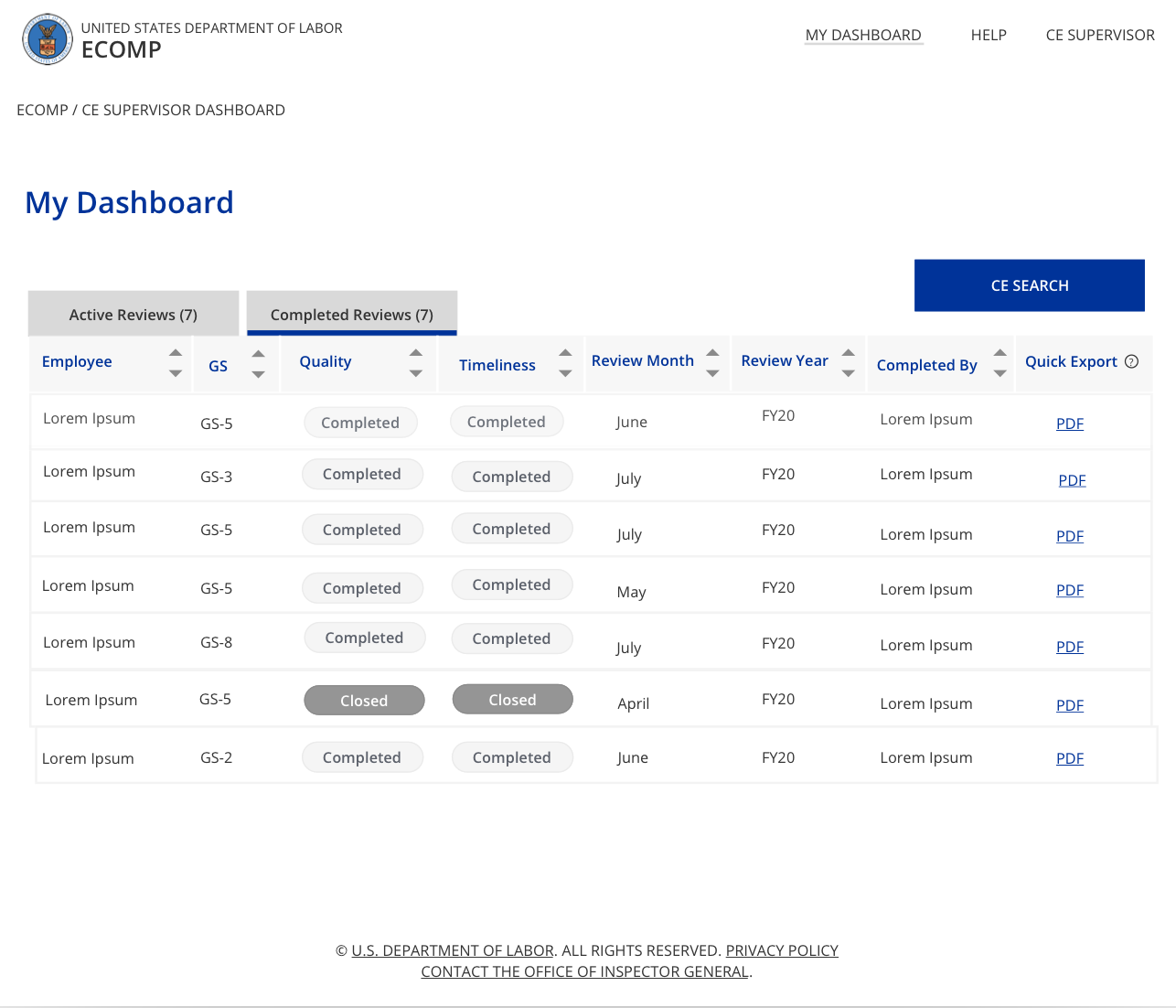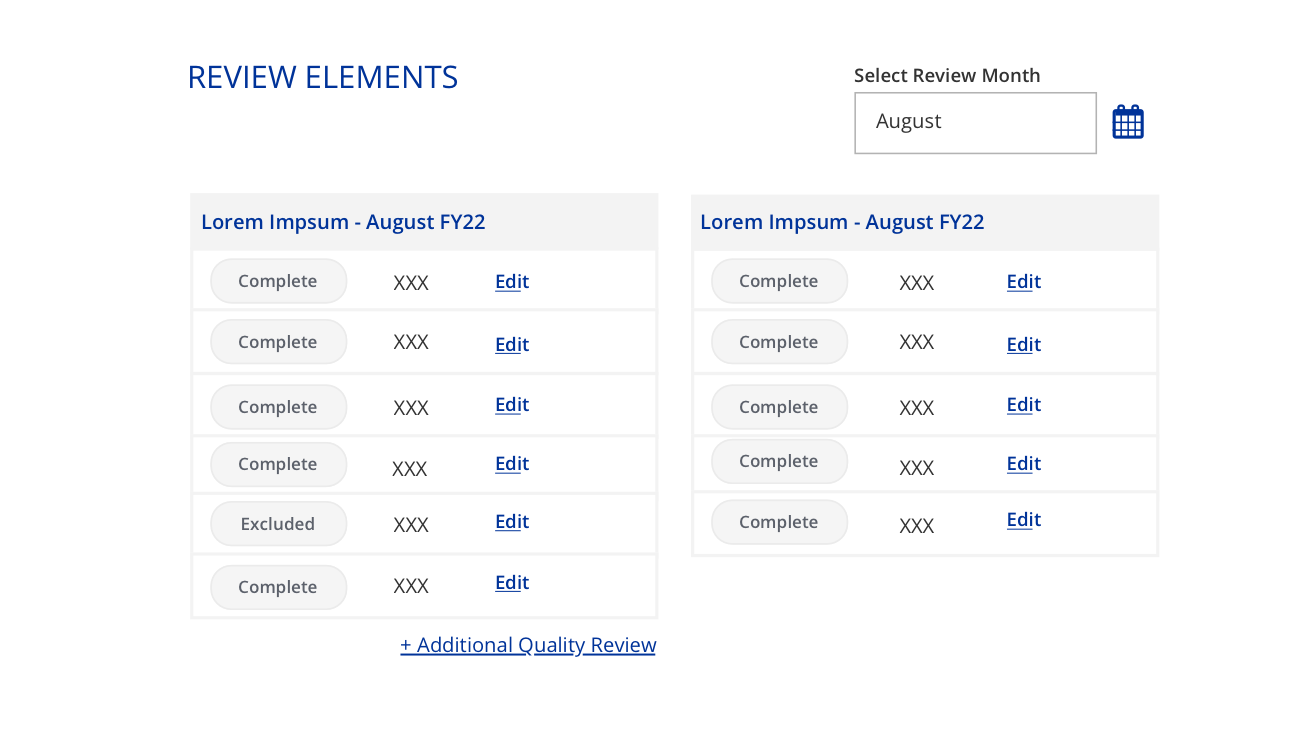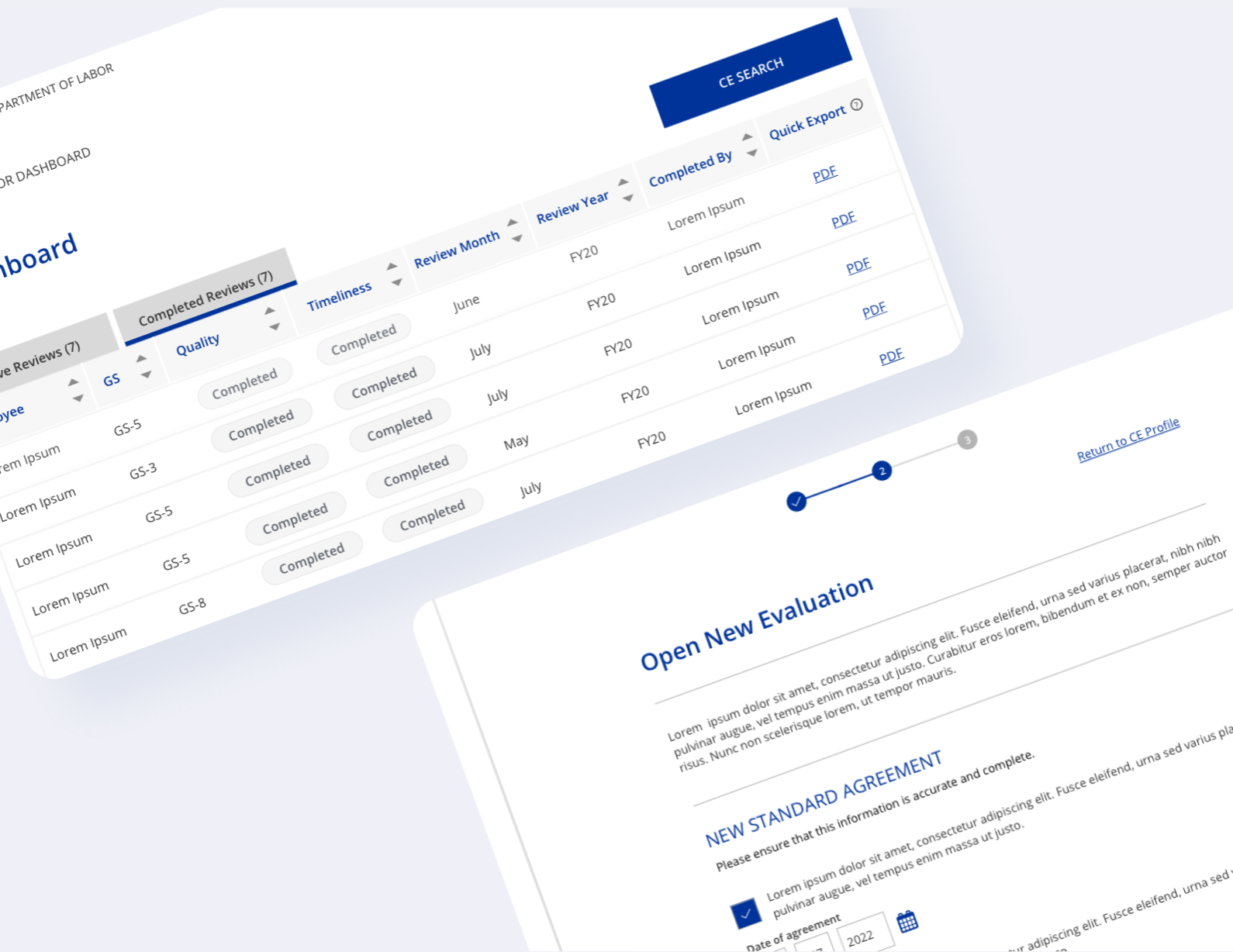
Staff Evaluation Dashboard
Redesigned the Department of Labor’s Office of Workers Compensation Program (OWCP) evaluation workflow with a responsive Dashboard and detailed staff profiles, streamlining case tracking and enabling Supervisors to efficiently manage their caseloads, supporting millions of federal employees in receiving workers’ compensation benefits.
ROLE + YEAR
Product Designer, 2021-22
PROBLEM SPACE
Streamlined monthly reviews for supervisors.
Faster feedback cycles to keep cases on track.
Improved team performance through timely, structured insights.
PRODUCT
Employees' Compensation Operations and Management Portal (ECOMP), US Department of Labor
SOLUTION
Integrated the Office of Workers Compensation Program (OWCP) process into ECOMP to streamline critical managerial tasks.
Boosted productivity and efficiency for workers’ compensation case management.
Understanding supervisors
Supervisors oversee teams of Case Examiners (CE) who manage the critical task of reviewing claims for the Office of Workers’ Compensation Program (OWCP). To ensure staff deliver high-quality and timely case reviews, supervisors conduct monthly evaluations of each team member’s work.
Through three rounds of intensive user interviews, I mapped the current evaluation process, uncovering pain points and identifying the key goals of Case Examiner (CE) Supervisors in managing and assessing their teams.
CE’s had clearly defined process but needed more support
Shared Pain Points:
Navigating multiple internal and external tools makes evaluations time-consuming and error-prone.
Tracking monthly case availability across the team is fragmented and frustrating.
Manual data aggregation slows decision-making.
Limited visibility prevents proactive team management.
Key findings
Notifications Drive Efficiency: Supervisors complete more work, faster, when they are alerted to case availability.
Opportunity for Targeted Support: A tool that clearly highlights which reviews are ready to begin could streamline workflows and reduce delays.
What should we build?
Supervisors were new users within the system, requiring careful attention to ensure their existing processes could be seamlessly integrated. Through user interviews, I developed a detailed persona, mapped current workflows, and identified shared goals across business, user, and client perspectives. This research provided a foundation for defining the project’s core features.
Comprehensive User Persona: Captured supervisors’ motivations, pain points, and workflow preferences.
Process and Workflow Mapping: Documented current evaluation processes to understand handoffs and bottlenecks.
Alignment of Goals: Identified shared business, user, and client objectives to guide design decisions.
Central Feature – Responsive Dashboard: Designed to display high-level case availability, enabling supervisors to quickly track team work on a rolling monthly basis.
How should we build it?
After defining the Dashboard’s core functionality, I explored different approaches to best address user needs. Using the detailed workflows I created, I developed low-fidelity screens to outline the ideal workflow and began identifying potential elements for the final feature.
Key Enhancements:
New User Onboarding: Ensures supervisors can integrate seamlessly into the system.
Quality & Timeliness Reviews: Provides tools to assess case accuracy and monitor performance.
Case Management Features: Supports efficient opening and closing of cases.
Granular Case Tracking: Enables supervisors to view detailed progress through staff profiles.
Throughout this phase, I collaborated closely with the Project Manager and Engineers. Additionally, extensive back-and-forth with Department of Labor leadership was critical to align on a final design that met both user and organizational needs.
early sketches for status button and dashboard design
Final designs: simplifying case management
User research revealed that Supervisors needed an efficient way to monitor case availability across their teams. To address this, we introduced status indicators on the Dashboard, giving Supervisors a high-level view of workflow progress and enabling quick, informed decisions.
Further research uncovered that each review contained ten distinct elements, requiring more granular tracking. To meet this need, we designed a dual-layer system that combined a high-level overview with detailed insights into each review component.
Key Features:
Staff Profiles: Central hub for tracking team members’ work and case progress.
Status Transitions: Clear visibility from "Available" → "Complete" → "Closed" for each review.
Robust Logic: Accurate updates even when managing multiple reviews at different stages.
Automated Tracking: Reduces manual monitoring and streamlines workflows.
By automating tracking and providing both high-level and granular insights, Supervisors could efficiently oversee 50+ reviews per month an increase of over 50%. This solution saved time and empowered users to manage their teams in a way that aligned with their preferred leadership style, improving overall workflow efficiency and effectiveness.
Birds eye view of completion status for each team member
Breakdown of the 10+ different reviews one staff member managed

